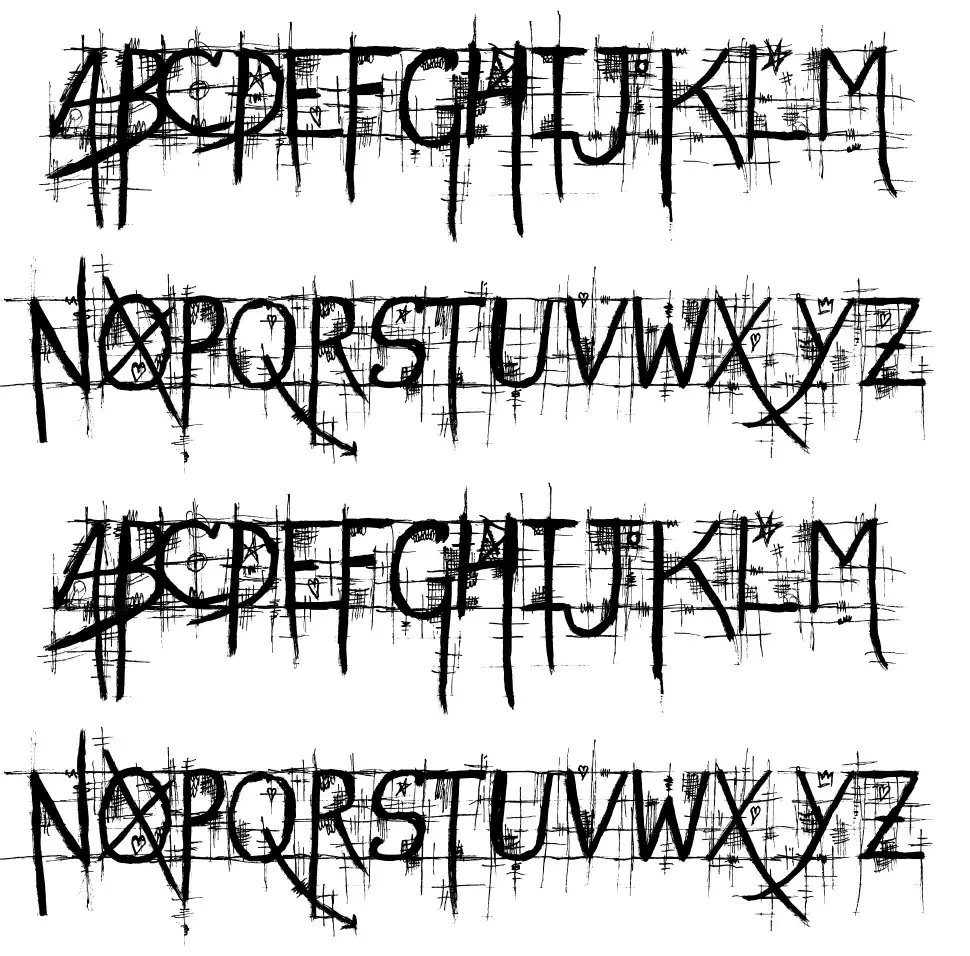
Though type and lettering have cross-pollinated for centuries (Gutenberg’s types, after all, were modeled on lettering), it seemed possible that no typeface designer had ever attempted to capture the lettered sans serif style I’d begun to admire. Because lettering existed separately from type, it had evolved its own unique styles and traditions: lithographed posters, engraved banknotes, gilded store windows, and chiseled gravestones were lettered, not typeset, and each exhibited shapes that reflected the qualities of its medium, and the tendencies of its artists. (Technically speaking, ‘typography’ refers only to the impression of ‘printing types,’ but this definition is woefully overdue for an update: fonts on the web are typography, and fonts on the iPhone are typography fonts are typography.) A century ago, only a book’s interior featured typography: whatever words appeared on its cover, spine, or illustrations were lettering, produced not by assembling letters, but by drawing them. While ‘type’ is the product of individual, pre-made, combinable letterforms, ‘lettering’ describes a unique and handmade composition, a one-off created to render a specific message in a specific place. I never found it, of course, because its shapes had come not from type, but from lettering. In my evenings, I lingered over these books, searching for the typeface that was my dream sans serif.

PushPin’s offices were dominated by an immense reference library that included an entire wall of type specimen books, a fossil record of the tens of thousands of typefaces that had perished in the mass extinctions of foundry type, hot metal, and photo type.

When I started, what seemed like an abundance of typefaces on the early Macintosh - more than a hundred fonts! - was put into sharp relief in 1988, when I got a job at a small studio that was the sub-subtenant of The PushPin Group, the legendary design practice run by Seymour Chwast, and founded by Chwast, Milton Glaser, and Edward Sorel in 1954. Like many designers, I learned typography backwards, starting from the material at my fingertips and working my way deeper into the past. Fashions in design had come and gone, like so many hairstyles or hemlines, but these elemental shapes endured, always managing to look current, relevant, and right. Judging from their absence in the literature of design, I seemed to be alone in my affection for them, which was bewildering given how widespread and long-lived they were.
Gothic typeface in use windows#
They animated Art Deco perfume bottles, and the occasional Modernist logo for industry, but mostly they were habitués of the mundane: they announced liquor stores and barber shops and florists, and hid in plain sight inside shop windows and elevator cars. They seemed to have existed forever: I’d seen their likeness painted on glass, cast in metal, and carved in stone, printed on urgent wartime bulletins and effervescent posters for aperitifs. It is in part bundled with Microsoft Windows.The strange thing was that they didn’t have a name.

Gothic typeface in use series#
Probably the best-known extension of Franklin Gothic is Victor Caruso's 1970s ITC Franklin Gothic, which expands the series to include book weights similar to Benton's News Gothic in a high x-height 1970s style. Many versions and adaptations have been made since. Benton's Franklin Gothic family is a set of solid designs, particularly suitable for display and trade use such as headlines rather than for extended text. Despite a period of eclipse in the 1930s, after the introduction of European faces like Kabel and Futura, they were re-discovered by American designers in the 1940s and have remained popular ever since. The typeface continues to maintain a high profile, appearing in a variety of media from books to billboards. Gothic #1, Square Gothic Heavy, Gothic #16įranklin Gothic has been used in many advertisements and headlines in newspapers. Quick facts: Category, Classification, Designer(s), Foundr.


 0 kommentar(er)
0 kommentar(er)
